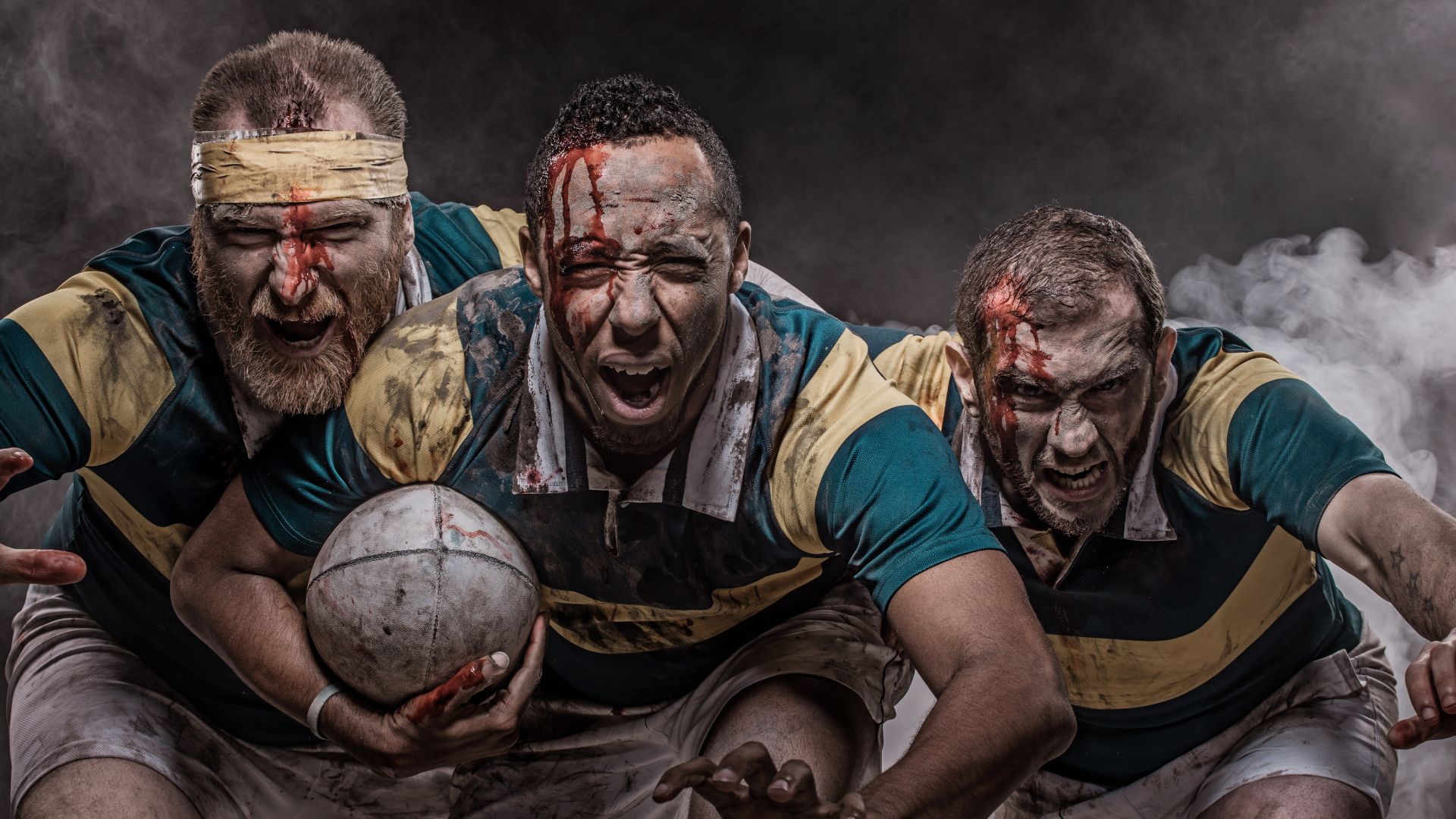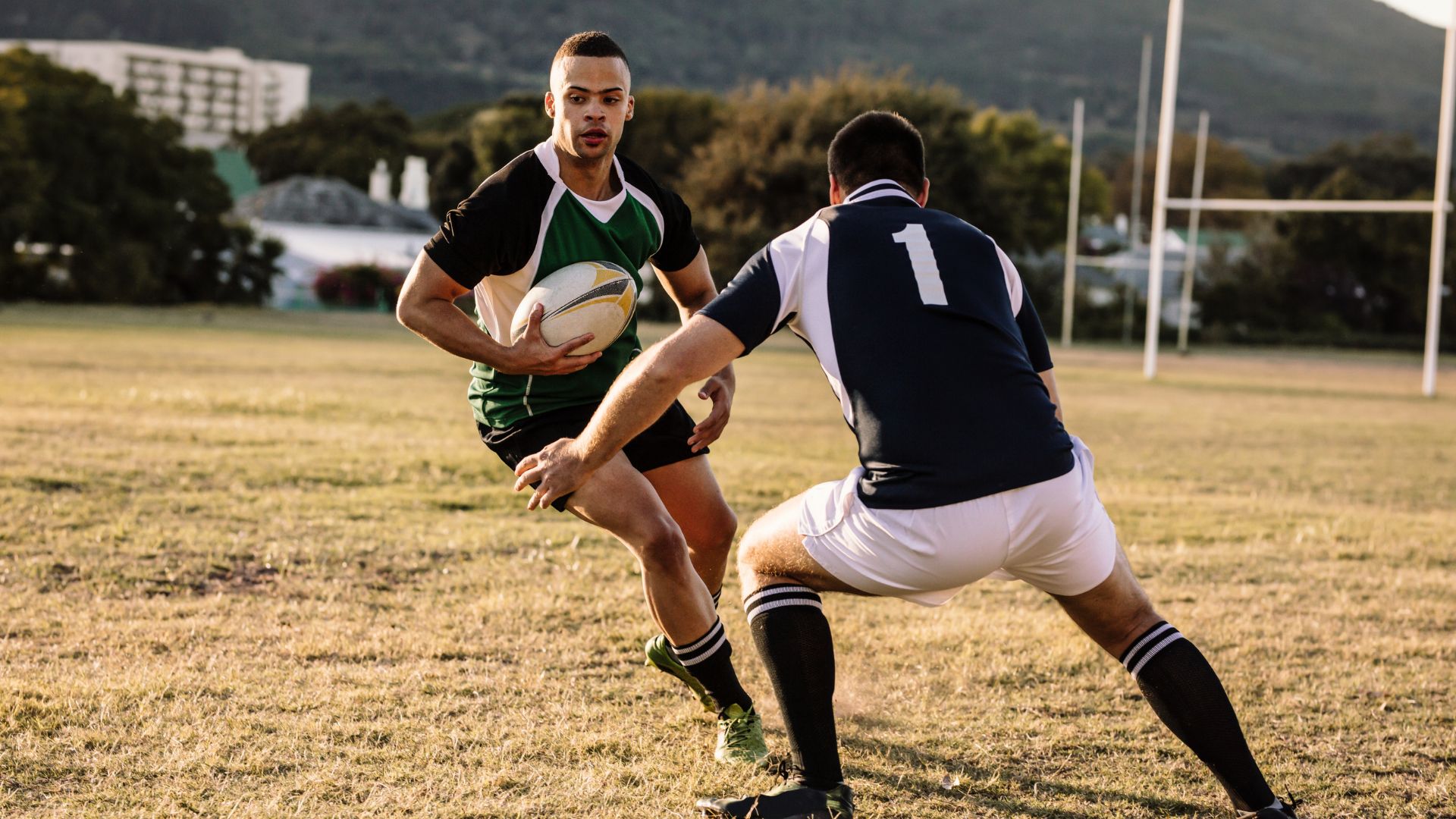Have you ever wondered what a rugby prop does? You’re not by yourself.
The unsung heroes of the scrum are these burly front-row warriors.
Let’s explore the world of props and learn how important they are to rugby union.
The Prop Position: More Than Just Brute Force
Props are the cornerstones of the scrum, literally holding up the front row.
There are two varieties available: loose-head and tight-head.
The number one jersey is worn by loose-heads, who bind outside the scrum.
Tight-heads sport number 3 and anchor the scrum from the inside.
Both types are crucial for a team’s set-piece success.

Primary Responsibilities: It’s Not All About Shoving
Although props are well-known for their ability to scrummage, they are more than just that.
Scrummaging: The Skill of Managed Chaos
In the scrum, props are the engine room.
They generate massive force, pushing against the opposition’s front row.
Proper binding technique is crucial here – it’s not just about raw power.
The engagement at places like Twickenham Stadium can be felt throughout the stands.
Lineout Support: More Than Just Heavy Lifting
Props play a key role in lineouts, often acting as lifters.
They hoist jumpers like acrobats, securing crucial possession.
It’s a test of strength, timing, and teamwork.
Rucking and Mauling: The Dirty Work
When the ball’s on the ground, props get down and dirty.
They clear out opponents at rucks, securing quick ball for their team.
In mauls, they’re the bulldozers, driving forward inch by inch.
The Ideal Prop: A Unique Blend of Attributes
Being a prop isn’t just about size – although that helps.
The best props, like Tendai Mtawarira, combine strength with technique.
They need:
- Incredible core strength
- Excellent lower body power
- Superior upper body strength
- Good mobility and flexibility
- High pain tolerance (those scrums aren’t gentle)
Rugby legend Jason Leonard embodied these traits throughout his career.
Evolution of the Prop: From Set-Piece Specialist to All-Rounder
Modern props aren’t just scrum machines.
They’re expected to contribute in open play too.
Look at Andrew Sheridan – a prop who could dominate in the scrum and make tackle-busting runs.
The role of props has evolved, much like the game itself.
From the Six Nations Championship to the Rugby World Cup, props are making their presence felt beyond the set-piece.
So, what does a prop do in rugby? They’re the foundation of the team’s set-piece, the unsung heroes of the ruck and maul, and increasingly, dynamic players in open play.
Famous Props in Rugby History: The Legends of the Front Row
Some props have left an indelible mark on rugby history:
Tendai “Beast” Mtawarira
- South African legend known for his incredible scrummaging power.
- Famously dominated the 2009 British and Irish Lions series.
- A perfect example of the modern, mobile prop.

Jason Leonard
- England‘s most-capped prop (114 caps).
- Nicknamed “The Fun Bus” for his robust playing style and jovial personality.
- Equally adept at loose-head and tight-head, a rare versatility.

Os du Randt
- South Africa‘s two-time World Cup winners (1995 and 2007).
- renowned for his endurance and steady, top-tier performances.

The Importance of Props in Modern Rugby
As rugby evolves, so does the role of the prop:
Set-Piece Dominance
A strong scrum can win penalties, territory, and even matches.
Props are the cornerstone of this crucial aspect of the game.
At venues like the Millennium Stadium, scrum dominance can swing momentum dramatically.
Defensive Pillars
When it comes to opposing runners, they are frequently the first line of defense.
In today’s fast-paced game, their ability to slow down the attack is essential.
Ball-Carrying Ability
Increasingly, props are called upon to carry the ball in tight spaces.
Their strength makes them hard to bring down, often requiring multiple defenders.
This creates space for other attackers to exploit.
Training for Prop Success: More Than Just Hitting the Gym
Becoming a top prop requires a well-rounded approach:

- Strength training: The main exercises are bench presses, deadlifts, and squats.
- Mobility work: The right scrummaging method requires flexibility.
- Cardio: Modern props need to last 80 minutes in high-intensity matches.
- Technical drills: Perfecting binding techniques and scrum engagement.
- Recovery: The physical demands on props make proper recovery essential.
Conclusion: The Unsung Heroes of Rugby
Although they don’t often make the news, props have a huge impact.
Props are the cornerstone around which rugby teams are constructed, from the scrums at Eden Park to the lineouts at Twickenham.
Take special notice of these warriors in the front row the next time you see a sport. Their strength, ability, and commitment are simply amazing.
Remember that behind every spectacular try by a back, whether it’s in the Rugby World Cup or the Six Nations Championship, a prop most likely put in the hard work to make it happen.
So, what does a prop do in rugby? Everything that matters, and then some.